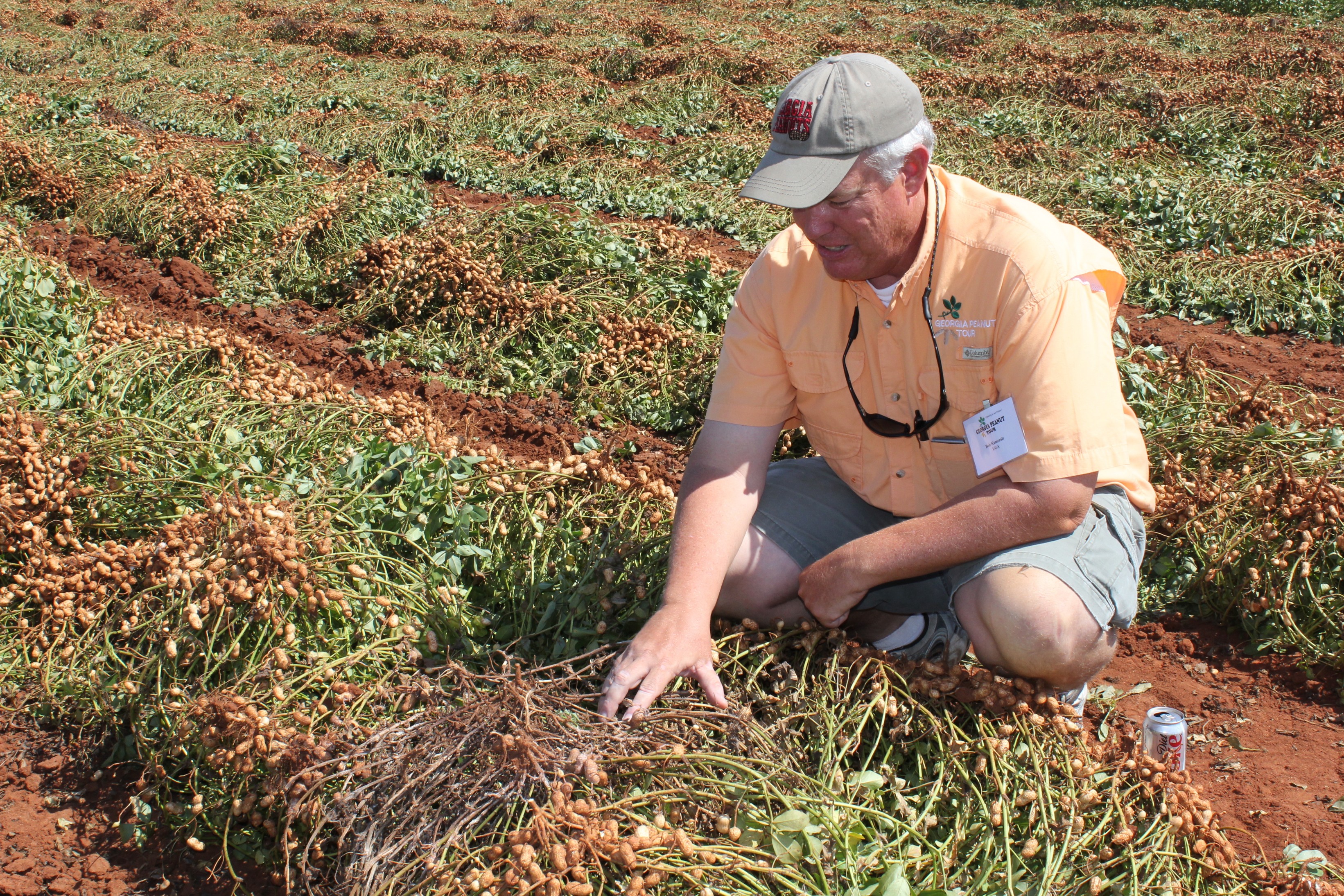
Bob Kemeriat, University of Georgia Extension Plant Pathologist, examines white mold in a peanut field in Marion County, Ga.
Passing green peanut fields along south Georgia’s many country roads at 60 miles per hour make peanut farming look fairly easy. With the exception of pigweeds and Florida beggarweeds that poke above the lush canopy every now and then, the peanut fields can look much like a gently rolling sea of emerald green punctuated here and there by the yellow of small blossoms. The serene image that many visiting our area find so restful, comforting, and even nostalgic belies the true battle between disease and farmer that rages just beneath the upper leaves.
White mold, caused by a fungal pathogen that attacks the stems, pegs and peanuts in a cottony wave of growth, has been as bad in 2010 as anyone can remember over the past 25 years. Very few, if any, peanut fields in southern Georgia have completely escaped this disease and many peanut farmers have been desperately trying to maintain control over white mold for nearly two months now. Bob Kemerait, University of Georgia Extension plant pathologist, worked with other UGA scientists as well as peanut farmers and offered some advice to handling white mold. White mold is a menacing fungus and is known as a necrotroph. Necrotrophs are pathogens that kill parts of the plant before hand and slowly soak up the nutrients from the remainder of the plant. If a farmer does not keep a thorough check in his fields, white mold can take over and demolish thousands of pounds of peanuts from an acre of land. The primary reason for the white mold outbreak is the extreme heat. Completely managing white mold in a field is virtually impossible without long periods rotated away from peanuts, soybeans, and vegetables. Farmers are spending massive amounts of money on fungicides but are most likely not having a positive effect on white mold in their fields in 2010. White mold attacks the interior of the plant, at and below the soil surface, and fungicides are applied to the upper canopy of the plant. Recent research conducted at the University of Georgia by Dr. Joao Augusto and Dr. Tim Brenneman has clearly demonstrated that growers can often improve their control of white mold by applying specific fungicides in periods of darkness at night or in the early morning. Peanut plants, like other members of the legume (bean) family, fold their leaves at night. By spraying the appropriate fungicides once the sun has gone down or before the sun comes up, growers are better able to take the battle to their foe allowing better disease control and improved yields.
